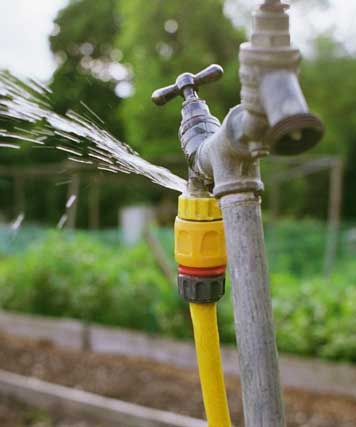Just how to Examine If Your House Has a Hidden Leak
Just how to Examine If Your House Has a Hidden Leak
Blog Article
Do you find yourself trying to find advice concerning Leaking water lines?

Early discovery of leaking water lines can alleviate a potential calamity. Some tiny water leakages may not be noticeable.
1. Examine the Water Meter
Every residence has a water meter. Checking it is a proven manner in which aids you discover leaks. For starters, switch off all the water resources. Guarantee no one will certainly flush, make use of the faucet, shower, run the cleaning device or dish washer. From there, most likely to the meter and also watch if it will change. Because nobody is using it, there must be no movements. If it relocates, that suggests a fast-moving leakage. If you spot no modifications, wait an hour or 2 and examine back once more. This implies you might have a sluggish leak that might also be below ground.
2. Check Water Consumption
Assess your water costs as well as track your water intake. As the one paying it, you must notice if there are any kind of discrepancies. If you identify sudden changes, despite your consumption being the same, it implies that you have leakages in your plumbing system. Keep in mind, your water costs should fall under the same range every month. A sudden spike in your bill indicates a fast-moving leak.
Meanwhile, a steady rise on a monthly basis, despite having the exact same routines, shows you have a slow leak that's also gradually rising. Call a plumber to thoroughly examine your residential property, especially if you really feel a cozy area on your floor with piping below.
3. Do a Food Coloring Test
30% comes from toilets when it comes to water intake. Test to see if they are running properly. Decline specks of food color in the tank and also wait 10 mins. If the color in some way infiltrates your bowl throughout that time without flushing, there's a leakage between the container as well as dish.
4. Asses Outside Lines
Don't neglect to examine your exterior water lines also. Ought to water leak out of the link, you have a loose rubber gasket. One small leakage can waste lots of water and also spike your water expense.
5. Evaluate and Assess the Situation
House owners need to make it a habit to inspect under the sink counters as well as also inside closets for any bad odor or mold growth. These 2 warnings show a leak so timely focus is called for. Doing regular evaluations, even bi-annually, can save you from a major issue.
Inspect for discolorations and also damaging as a lot of home appliances as well as pipes have a life expectancy. If you believe dripping water lines in your plumbing system, don't wait for it to escalate.
Early discovery of leaking water lines can mitigate a possible catastrophe. Some tiny water leakages might not be visible. Examining it is a guaranteed method that helps you uncover leakages. One tiny leakage can lose loads of water and increase your water expense.
If you believe dripping water lines in your plumbing system, don't wait for it to rise.
WARNING SIGNS OF WATER LEAKAGE BEHIND THE WALL
PERSISTENT MUSTY ODORS
As water slowly drips from a leaky pipe inside the wall, flooring and sheetrock stay damp and develop an odor similar to wet cardboard. It generates a musty smell that can help you find hidden leaks.
MOLD IN UNUSUAL AREAS
Mold usually grows in wet areas like kitchens, baths and laundry rooms. If you spot the stuff on walls or baseboards in other rooms of the house, it’s a good indicator of undetected water leaks.
STAINS THAT GROW
When mold thrives around a leaky pipe, it sometimes takes hold on the inside surface of the affected wall. A growing stain on otherwise clean sheetrock is often your sign of a hidden plumbing problem.
PEELING OR BUBBLING WALLPAPER / PAINT
This clue is easy to miss in rooms that don’t get much use. When you see wallpaper separating along seams or paint bubbling or flaking off the wall, blame sheetrock that stays wet because of an undetected leak.
BUCKLED CEILINGS AND STAINED FLOORS
If ceilings or floors in bathrooms, kitchens or laundry areas develop structural problems, don’t rule out constant damp inside the walls. Wet sheetrock can affect adjacent framing, flooring and ceilings.
https://www.servicemasterbyzaba.com/blog/how-to-detect-water-leakage-in-walls/

I ran across that entry on Leaking water lines when scouting around the search engines. Sharing is nice. You just don't know, you will be helping someone out. Thanks a bunch for your time. Please come visit our blog back soon.
Report this page